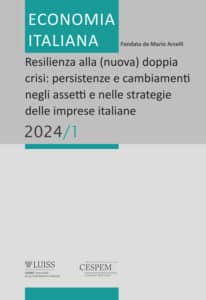Following the unprecedented crisis caused by the Covid-19 pandemic, Italy’s economy experienced a strong rebound, especially in comparison with its main European partners. This result can be attributed to the timely and extensive support (unlike the policy response to the crises in 2008-12) of the national government and European Central Bank (ECB), and to business strategies to remarkable changes of the Italian productive system. Especially Italian firms in tradable sectors performed remarkably.
The rebound of various economic sectors however was uneven with a lagged recovery of Services, which suffered the most the negative effects of the Pandemic, and a strong dynamism for the Constructions supported by the “Superbonus” scheme. The manufacturing sectors, in this context, showed a very quick recovery which was driven by the industries which benefited by larger share of exports and higher productivity.
In this paper we contribute to the existing literature providing an empirical exercise to assess the main factors behind the heterogeneity in the recovery pattern of the Italian manufacturing sectors.
Italian economy, which in its path of recovery outperformed its main European partners, is currently facing many challenges such as the management of high public debt, stagnating productivity and demographic issues. Successfully implementing the investments and reforms outlined in the National Recovery and Resilience Plan (NRRP) will be crucial to support demand and enhance longer-term growth prospects, also related to the ongoing green and digital transitions.

Gli articoli del numero di Economia Italiana possono essere scaricati liberamente, previa iscrizione gratuita, sul sito www.economiaitaliana.org.